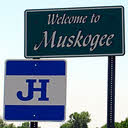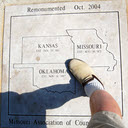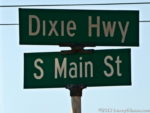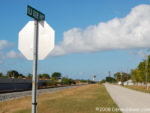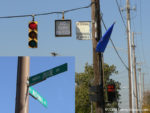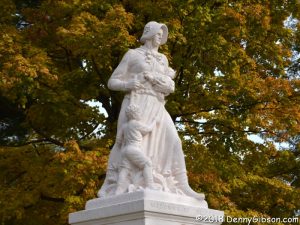 The Madonna of the Trail statues were one of the first things that entered my mind when I initially started thinking of sets of things I had seen all of. When the era of named auto trails came to an end, a couple of the major auto trails undertook projects aimed at keeping their names alive for posterity. The Lincoln Highway was marked by nearly 2,500 concrete posts that literally guided travelers along the entire route. The National Old Trails Road Association’s project was, in some sense, less ambitious in that only twelve markers were placed; One in each state the highway passed through. The markers themselves were much larger and more intricate than direction markers and all twelve still exist at or near their original locations which makes seeing the whole caboodle possible. Photos of the statues follow in the sequence in which I first saw them with the exception of the photo at right. That’s a 2018 photo of the Madonna in Richmond, Indiana. Comments accompanying the pictures include the date of dedication, its position in the sequence of dedications, and the coordinates of its location.
The Madonna of the Trail statues were one of the first things that entered my mind when I initially started thinking of sets of things I had seen all of. When the era of named auto trails came to an end, a couple of the major auto trails undertook projects aimed at keeping their names alive for posterity. The Lincoln Highway was marked by nearly 2,500 concrete posts that literally guided travelers along the entire route. The National Old Trails Road Association’s project was, in some sense, less ambitious in that only twelve markers were placed; One in each state the highway passed through. The markers themselves were much larger and more intricate than direction markers and all twelve still exist at or near their original locations which makes seeing the whole caboodle possible. Photos of the statues follow in the sequence in which I first saw them with the exception of the photo at right. That’s a 2018 photo of the Madonna in Richmond, Indiana. Comments accompanying the pictures include the date of dedication, its position in the sequence of dedications, and the coordinates of its location.
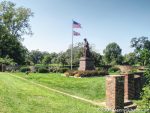
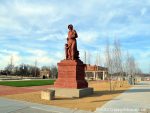 1. The first Madonna of the Trail monument I ever saw was, unsurprisingly, the one in my home state of Ohio. It originally stood about three miles west of downtown Springfield but was moved a little closer to town in 1956 or ’57. The first picture was taken in 2004 at the second location. I never saw her at her original location. The second picture shows her at her current home in downtown Springfield where she moved in 2011. Dedicated 1st, July 4, 1928. N39° 55.496′ W83° 48.677′
1. The first Madonna of the Trail monument I ever saw was, unsurprisingly, the one in my home state of Ohio. It originally stood about three miles west of downtown Springfield but was moved a little closer to town in 1956 or ’57. The first picture was taken in 2004 at the second location. I never saw her at her original location. The second picture shows her at her current home in downtown Springfield where she moved in 2011. Dedicated 1st, July 4, 1928. N39° 55.496′ W83° 48.677′
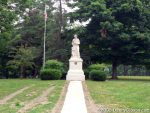
 2. Of course, there’s also no surprise in the fact that my second Madonna was the one in Richmond, Indiana. Not only are these two Madonnas the closest to me, I believe they are closer to each other than any other pair. The first picture was taken in 2004 on the same day as a preceding picture of the Ohio Madonna. The second picture, with a clearer and brighter Madonna and a new walkway, was taken just two years later. Dedicated 9th, October 28, 1928. N39° 49.835′ W84° 52.334′
2. Of course, there’s also no surprise in the fact that my second Madonna was the one in Richmond, Indiana. Not only are these two Madonnas the closest to me, I believe they are closer to each other than any other pair. The first picture was taken in 2004 on the same day as a preceding picture of the Ohio Madonna. The second picture, with a clearer and brighter Madonna and a new walkway, was taken just two years later. Dedicated 9th, October 28, 1928. N39° 49.835′ W84° 52.334′
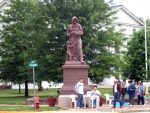 3. In 2005, I ventured one state beyond Indiana to visit my third Madonna of the Trail monument in Vandalia, Illinois. A festival that I never did identify, was in progress in the former state capital when we arrived. As part of the festival, raffle tickets were being sold at the base of the monument which sits on the grounds of the old capitol building. Dedicated 7th, October 26, 1928. N38° 57.649′ W89° 05.671′
3. In 2005, I ventured one state beyond Indiana to visit my third Madonna of the Trail monument in Vandalia, Illinois. A festival that I never did identify, was in progress in the former state capital when we arrived. As part of the festival, raffle tickets were being sold at the base of the monument which sits on the grounds of the old capitol building. Dedicated 7th, October 26, 1928. N38° 57.649′ W89° 05.671′
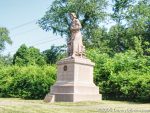 4. A month later, I added two Madonnas in the states just east of Ohio. The sightings occurred on the way home from a business trip to central Pennsylvania so that state’s Madonna, at Beallsville, was encountered first. Dedicated 10th, December 8, 1928. N40° 03.630′ W80° 00.776′
4. A month later, I added two Madonnas in the states just east of Ohio. The sightings occurred on the way home from a business trip to central Pennsylvania so that state’s Madonna, at Beallsville, was encountered first. Dedicated 10th, December 8, 1928. N40° 03.630′ W80° 00.776′
 5. West Virginia’s Madonna of the Trail came next. It is positioned a little east of Wheeling. At this point, 80% of the Madonna monuments I had seen were situated on or very near golf courses and I began to think there might be some sort of symbiotic relationship between the two. Dedicated 2nd, July 7, 1928. N40° 03.362′ W80° 40.157′
5. West Virginia’s Madonna of the Trail came next. It is positioned a little east of Wheeling. At this point, 80% of the Madonna monuments I had seen were situated on or very near golf courses and I began to think there might be some sort of symbiotic relationship between the two. Dedicated 2nd, July 7, 1928. N40° 03.362′ W80° 40.157′
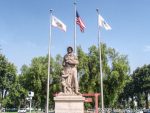 6. In September 2005, I bagged my fourth Madonna of the year and sixth overall. The California monument is not near a golf course or any other open space. It is in the city of Upland in the median of a busy street near an intersection with an even busier street. I would, in fact, never find another Madonna and golf course pairing. Dedicated 11th, February 1, 1929. N34° 06.434′ W117° 39.073′
6. In September 2005, I bagged my fourth Madonna of the year and sixth overall. The California monument is not near a golf course or any other open space. It is in the city of Upland in the median of a busy street near an intersection with an even busier street. I would, in fact, never find another Madonna and golf course pairing. Dedicated 11th, February 1, 1929. N34° 06.434′ W117° 39.073′
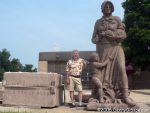
 7. In 2006, I drove the full length of the National Road in celebration of the 200th anniversary of the legislation that first authorized it. That took me past all of the Madonnas east of the Mississippi but only one of those was new to me. It was also missing. A sinkhole had endangered the Bethesda, Maryland, monument prior to my visit and it was stored a few miles away awaiting site repairs. That turned into an opportunity for my absolute favorite Madonna of the Trail photo ever. I was able to get a shot of the lady in her rightful place in 2011. Dedicated 12th, April 19, 1929. N38° 59.046′ W77° 05.655′
7. In 2006, I drove the full length of the National Road in celebration of the 200th anniversary of the legislation that first authorized it. That took me past all of the Madonnas east of the Mississippi but only one of those was new to me. It was also missing. A sinkhole had endangered the Bethesda, Maryland, monument prior to my visit and it was stored a few miles away awaiting site repairs. That turned into an opportunity for my absolute favorite Madonna of the Trail photo ever. I was able to get a shot of the lady in her rightful place in 2011. Dedicated 12th, April 19, 1929. N38° 59.046′ W77° 05.655′
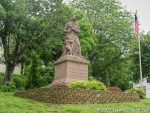 8. On the west edge of Lexington, Missouri’s Madonna of the Trail became my eighth in May 2007. Getting to two-thirds of the caboodle took just four years but it would be another four years before I would even get started on the last third. Dedicated 4th, September 17, 1928. N39° 11.197′ W93° 53.177′
8. On the west edge of Lexington, Missouri’s Madonna of the Trail became my eighth in May 2007. Getting to two-thirds of the caboodle took just four years but it would be another four years before I would even get started on the last third. Dedicated 4th, September 17, 1928. N39° 11.197′ W93° 53.177′
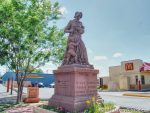 9. A two Madonna day started in 2011 with the monument in Springerville, Arizona. Here the idea of Madonna of the Trail monuments being given scenic pastoral settings really took a beating. This lady occupies a small plot adjacent to a MacDonald’s. The marker behind her identifies this as a stop on a historic driving tour. Dedicated 7th, September 29, 1928. N34° 07.993′ W109° 17.108′
9. A two Madonna day started in 2011 with the monument in Springerville, Arizona. Here the idea of Madonna of the Trail monuments being given scenic pastoral settings really took a beating. This lady occupies a small plot adjacent to a MacDonald’s. The marker behind her identifies this as a stop on a historic driving tour. Dedicated 7th, September 29, 1928. N34° 07.993′ W109° 17.108′

 10. The second Madonna of the day was in Albuquerque, New Mexico. I’d been in Albuquerque before but had missed the monument. I had previously driven through the city on Historic US 66 which was the National Old Trails Road successor in these parts but I had not driven the original pre-1937 alignment which had followed the NOTR and on which the statue had been placed. Another complication was that the monument had been moved to the north corner of the area it was in which put it nearly a block away from even the old Sixty-Six alignment. To make up for missing it on earlier visits, I’ve included a picture of Madonna with a friend. Dedicated 6th, September 27, 1928. N35° 05.572′ W106° 38.991′
10. The second Madonna of the day was in Albuquerque, New Mexico. I’d been in Albuquerque before but had missed the monument. I had previously driven through the city on Historic US 66 which was the National Old Trails Road successor in these parts but I had not driven the original pre-1937 alignment which had followed the NOTR and on which the statue had been placed. Another complication was that the monument had been moved to the north corner of the area it was in which put it nearly a block away from even the old Sixty-Six alignment. To make up for missing it on earlier visits, I’ve included a picture of Madonna with a friend. Dedicated 6th, September 27, 1928. N35° 05.572′ W106° 38.991′
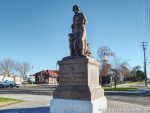 11. The count stayed at ten for another five years. I reached the final pair on consecutive days in 2016. The Madonna of the Trail monument in Lamar, Colorado, is next to an old train station now serving as a visitor center. Dedicated 5th, September 24, 1928. N38° 05.360′ W102° 37.147′
11. The count stayed at ten for another five years. I reached the final pair on consecutive days in 2016. The Madonna of the Trail monument in Lamar, Colorado, is next to an old train station now serving as a visitor center. Dedicated 5th, September 24, 1928. N38° 05.360′ W102° 37.147′

 12. In Council Grove, Kansas, the setting for the Madonna of the Trail monument is pretty open. It’s a bit reminiscent of the park-like settings of my early Madonna visits even though there isn’t a golf course in sight. Dedicated 3rd, September 7, 1928. N38° 39.724′ W96° 29.212′
12. In Council Grove, Kansas, the setting for the Madonna of the Trail monument is pretty open. It’s a bit reminiscent of the park-like settings of my early Madonna visits even though there isn’t a golf course in sight. Dedicated 3rd, September 7, 1928. N38° 39.724′ W96° 29.212′
ADDENDUM 14-Jan-2024: After gathering the coordinates of all the Madonnas for another project, I decided to add them here.
 I headed out on my Christmas Escape Run yesterday and now have the first day’s journal posted. Since my October Route 66 Miles of Possibility 2022 trip was cut short by COVID, I decided to finish it (and then some) for Christmas. The original draft of this post said if things go as planned, every night of the trip will be spent in a classic motel and classic restaurants will account for a high percentage of my dining activities. The classic motel and restaurant comment might still apply but things definitely are not going as planned. Dire weather forecasts for my intended route have me detouring to the south although I still hope to end up where planned for Christmas. The picture is of the winter solstice sunrise near Greensburg, Indiana.
I headed out on my Christmas Escape Run yesterday and now have the first day’s journal posted. Since my October Route 66 Miles of Possibility 2022 trip was cut short by COVID, I decided to finish it (and then some) for Christmas. The original draft of this post said if things go as planned, every night of the trip will be spent in a classic motel and classic restaurants will account for a high percentage of my dining activities. The classic motel and restaurant comment might still apply but things definitely are not going as planned. Dire weather forecasts for my intended route have me detouring to the south although I still hope to end up where planned for Christmas. The picture is of the winter solstice sunrise near Greensburg, Indiana.
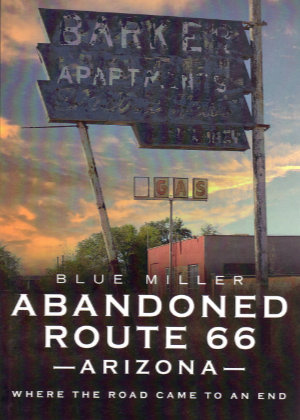 If I maintained a list of questions I frequently ask myself, “Why another Route 66 book?”, would be high on the list. I have never arrived at a reason that another one is actually needed; only justifications for ones at hand. Those justifications generally take the form of answers to two questions. They are, “What makes this book different from all others?”, and “Why should I buy it?” In practice, I ask them in the reverse order which means that, if I don’t have a good reason to buy a book, I’ll probably never get around to discovering what, if anything, makes it different.
If I maintained a list of questions I frequently ask myself, “Why another Route 66 book?”, would be high on the list. I have never arrived at a reason that another one is actually needed; only justifications for ones at hand. Those justifications generally take the form of answers to two questions. They are, “What makes this book different from all others?”, and “Why should I buy it?” In practice, I ask them in the reverse order which means that, if I don’t have a good reason to buy a book, I’ll probably never get around to discovering what, if anything, makes it different.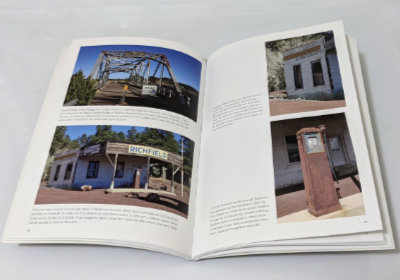 Although not of the coffee table variety, this is first and foremost a photo book. It contains upward of a hundred photographs, in color, printed on good quality semi-gloss paper. They are primarily documentary photos. That does not mean that they are boring, but it does mean that properly recording each subject is the main goal. The book is certainly not without its share of creative composition, but there are no abstract-light-patterns-on-pavement style pictures. There are usually two or more photos on a page for a max size somewhere around 5.5 by 3.5 inches. That might keep you from displaying it on your coffee table, but it is plenty big enough to show off bridges, buildings, and signs.
Although not of the coffee table variety, this is first and foremost a photo book. It contains upward of a hundred photographs, in color, printed on good quality semi-gloss paper. They are primarily documentary photos. That does not mean that they are boring, but it does mean that properly recording each subject is the main goal. The book is certainly not without its share of creative composition, but there are no abstract-light-patterns-on-pavement style pictures. There are usually two or more photos on a page for a max size somewhere around 5.5 by 3.5 inches. That might keep you from displaying it on your coffee table, but it is plenty big enough to show off bridges, buildings, and signs.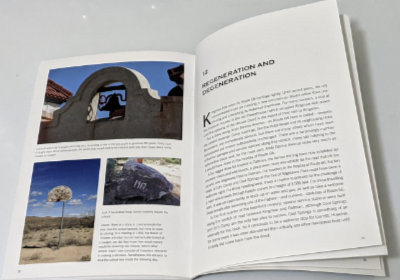 Yes, the pictures are cool and those of some fairly obscure places enlightening, but it is the words that made me happy with my purchase. The histories of most of the pictured buildings are told. Some are reasonably well known and available elsewhere, but Miller’s telling is both complete and concise. Others are not so well known, and I’ve little doubt that Miller’s aforementioned sleuthing ability brought out some details and possibly some entire stories. Maybe others knew all those details about the schools of Valentine, but I sure didn’t, and the story of the Ostermans and Peach Springs was all new to me. There are other examples of what I take to be sleuthing in the book, and all of them add to my appreciation of it.
Yes, the pictures are cool and those of some fairly obscure places enlightening, but it is the words that made me happy with my purchase. The histories of most of the pictured buildings are told. Some are reasonably well known and available elsewhere, but Miller’s telling is both complete and concise. Others are not so well known, and I’ve little doubt that Miller’s aforementioned sleuthing ability brought out some details and possibly some entire stories. Maybe others knew all those details about the schools of Valentine, but I sure didn’t, and the story of the Ostermans and Peach Springs was all new to me. There are other examples of what I take to be sleuthing in the book, and all of them add to my appreciation of it.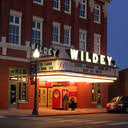

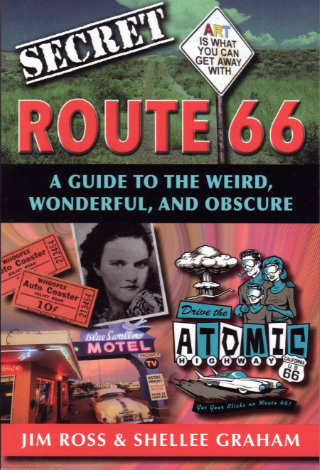 At first glance, this probably looks like a perfect fit for my bookshelf. Like many of the other books there, its subject is a historic highway and its authors are people I know. In this case, the highway is Route 66 and the people are the husband-and-wife team of Jim Ross and Shellee Graham. Both are accomplished historians, photographers, and writers with Jim probably having a bit of an edge in the history department, Shellee having an equally small lead on the photography side, and their writing skills being too close to call. A second glance, however, just might turn up something about this book that is different from most of the others with which it now shares shelf space. It is the word “secret”.
At first glance, this probably looks like a perfect fit for my bookshelf. Like many of the other books there, its subject is a historic highway and its authors are people I know. In this case, the highway is Route 66 and the people are the husband-and-wife team of Jim Ross and Shellee Graham. Both are accomplished historians, photographers, and writers with Jim probably having a bit of an edge in the history department, Shellee having an equally small lead on the photography side, and their writing skills being too close to call. A second glance, however, just might turn up something about this book that is different from most of the others with which it now shares shelf space. It is the word “secret”. So how is this book I didn’t exactly want? Surprisingly good. I’m not really all that surprised, of course. To my relief, the idea of revealing secrets doesn’t get much further than the title. I doubted that a pair of respected authorities would suddenly become conspiratorial sounding characters sharing dark secrets from the shadows but it was good to have that verified. To some extent, the subtitle also does that. Weird, wonderful, and obscure accurately describe the book’s contents.
So how is this book I didn’t exactly want? Surprisingly good. I’m not really all that surprised, of course. To my relief, the idea of revealing secrets doesn’t get much further than the title. I doubted that a pair of respected authorities would suddenly become conspiratorial sounding characters sharing dark secrets from the shadows but it was good to have that verified. To some extent, the subtitle also does that. Weird, wonderful, and obscure accurately describe the book’s contents. Almost everything in Secret Route 66: A Guide to the Weird, Wonderful, and Obscure is something that, while not actually a secret, is not likely to be found in mainstream guides. Even when the subject is something commonly known, Ross and Graham provide some detail or backstory not commonly known at all. Sometimes the subject isn’t a place or a thing but simply that uncommon detail or story. Among the things that struck me as weird is the true tale of a proposal to use atomic bombs for roadway excavation. Everyone has their own definition of wonderful but my definition is matched by the story of the Motel St. Louis sign that wandered off to help people find another motel (Finn’s in St. James) and then a church (New Hope) before being rescued and returned home. I thought learning about the annual reunion for the ghost town of Alanreed was kind of wonderful, too. Topping my personal list of obscure things is the chapter on several abandoned bridge abutments on the original route through Santa Fe.
Almost everything in Secret Route 66: A Guide to the Weird, Wonderful, and Obscure is something that, while not actually a secret, is not likely to be found in mainstream guides. Even when the subject is something commonly known, Ross and Graham provide some detail or backstory not commonly known at all. Sometimes the subject isn’t a place or a thing but simply that uncommon detail or story. Among the things that struck me as weird is the true tale of a proposal to use atomic bombs for roadway excavation. Everyone has their own definition of wonderful but my definition is matched by the story of the Motel St. Louis sign that wandered off to help people find another motel (Finn’s in St. James) and then a church (New Hope) before being rescued and returned home. I thought learning about the annual reunion for the ghost town of Alanreed was kind of wonderful, too. Topping my personal list of obscure things is the chapter on several abandoned bridge abutments on the original route through Santa Fe.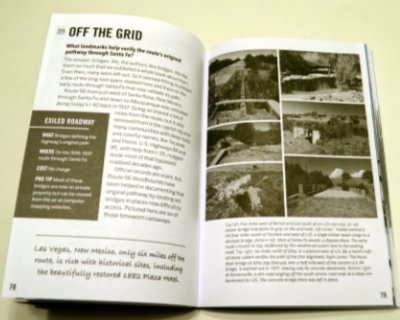 A pair of facing pages make up each of the ninety chapters so that everything about an item can be studied without flipping back and forth. A sidebar contains appropriate information, such as location. These pages are printed in black and white, but they are augmented by sixteen pages of color photographs (plus 2 b&w to make the positioning work) in the middle of the book. Some page flipping here is appropriate but the subject and associated page number are shown for each photo to make it easy. Images in the book are a mixture of historic and modern. Most of the modern photos are the work of the authors but not all. Other researchers and photographers are always credited with images provided.
A pair of facing pages make up each of the ninety chapters so that everything about an item can be studied without flipping back and forth. A sidebar contains appropriate information, such as location. These pages are printed in black and white, but they are augmented by sixteen pages of color photographs (plus 2 b&w to make the positioning work) in the middle of the book. Some page flipping here is appropriate but the subject and associated page number are shown for each photo to make it easy. Images in the book are a mixture of historic and modern. Most of the modern photos are the work of the authors but not all. Other researchers and photographers are always credited with images provided.

















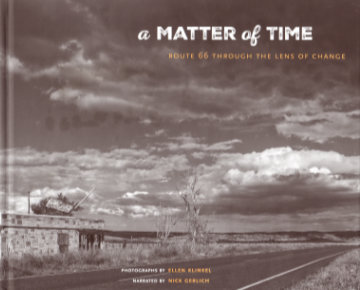 There’s not much point in counting the number of books published about Route 66; The likelihood that the count would increase before you were done is just too great. An Amazon search simply says “over 2,000”. So why review this one? What sets it apart from the others? The most obvious reason for reviewing it is a simple one: I know one of the people whose name is on the cover. The things that set it apart are not as obvious (or benignly biased). In fact, I’ve only found one thing about the book that I think is actually unique, and I’m not really sure about that. The book has no author; It has a narrator.
There’s not much point in counting the number of books published about Route 66; The likelihood that the count would increase before you were done is just too great. An Amazon search simply says “over 2,000”. So why review this one? What sets it apart from the others? The most obvious reason for reviewing it is a simple one: I know one of the people whose name is on the cover. The things that set it apart are not as obvious (or benignly biased). In fact, I’ve only found one thing about the book that I think is actually unique, and I’m not really sure about that. The book has no author; It has a narrator.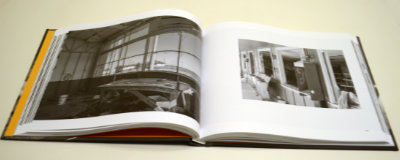 The photos are black and white, which is unusual but not unique. What may be unique is how they came to be at all. Klinkel tells that story in the book’s preface. It begins in 2013. She lives in Germany and was in the western U.S. with her husband for a four-week vacation which she describes as “the first time I ever had a serious camera in my hands”. Planned visits to several national parks fell victim to the sixteen-day government shutdown in October of that year and driving a portion of Route 66 was substituted. Klinkel credits this very first time on the historic highway coupled with the “serious camera” as having “instantly sparked my passion for photography”.
The photos are black and white, which is unusual but not unique. What may be unique is how they came to be at all. Klinkel tells that story in the book’s preface. It begins in 2013. She lives in Germany and was in the western U.S. with her husband for a four-week vacation which she describes as “the first time I ever had a serious camera in my hands”. Planned visits to several national parks fell victim to the sixteen-day government shutdown in October of that year and driving a portion of Route 66 was substituted. Klinkel credits this very first time on the historic highway coupled with the “serious camera” as having “instantly sparked my passion for photography”. Most, but far from all, of the photos are of places I recognize from my own travels on Sixty-Six, and some of those nearly reproduce visions I’ve had myself. There are plenty of pictures of places I do not recognize. Sometimes that’s because they are from a location where I’ve never stopped or maybe even passed, but sometimes it’s because Klinkel sees and shares a vision that never occurred to me even though I’ve stood at or near the very spot she did. I don’t mean to imply that I expected anything else. It’s great to be shown something you’ve never seen, but it can be even better to be shown something known in a new way. Although it is a place I instantly recognized, a favorite example of being shown something in a new way is the early morning shot of the Bagdad Cafe with the coming sun just a tiny but significant twinkle. Another is the low-level shot of a protective wall of tires at a long-abandoned gas station at Texas Exit 0 of I-40.
Most, but far from all, of the photos are of places I recognize from my own travels on Sixty-Six, and some of those nearly reproduce visions I’ve had myself. There are plenty of pictures of places I do not recognize. Sometimes that’s because they are from a location where I’ve never stopped or maybe even passed, but sometimes it’s because Klinkel sees and shares a vision that never occurred to me even though I’ve stood at or near the very spot she did. I don’t mean to imply that I expected anything else. It’s great to be shown something you’ve never seen, but it can be even better to be shown something known in a new way. Although it is a place I instantly recognized, a favorite example of being shown something in a new way is the early morning shot of the Bagdad Cafe with the coming sun just a tiny but significant twinkle. Another is the low-level shot of a protective wall of tires at a long-abandoned gas station at Texas Exit 0 of I-40. However, something clicked on a rereading of that preface that hadn’t quite registered on the first pass. Klinkel explains the title quite clearly:
However, something clicked on a rereading of that preface that hadn’t quite registered on the first pass. Klinkel explains the title quite clearly: